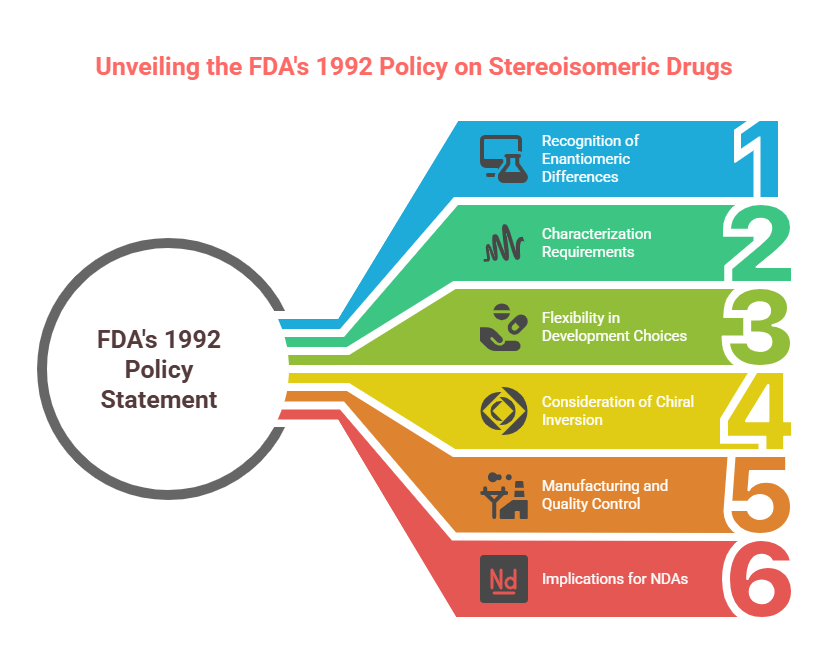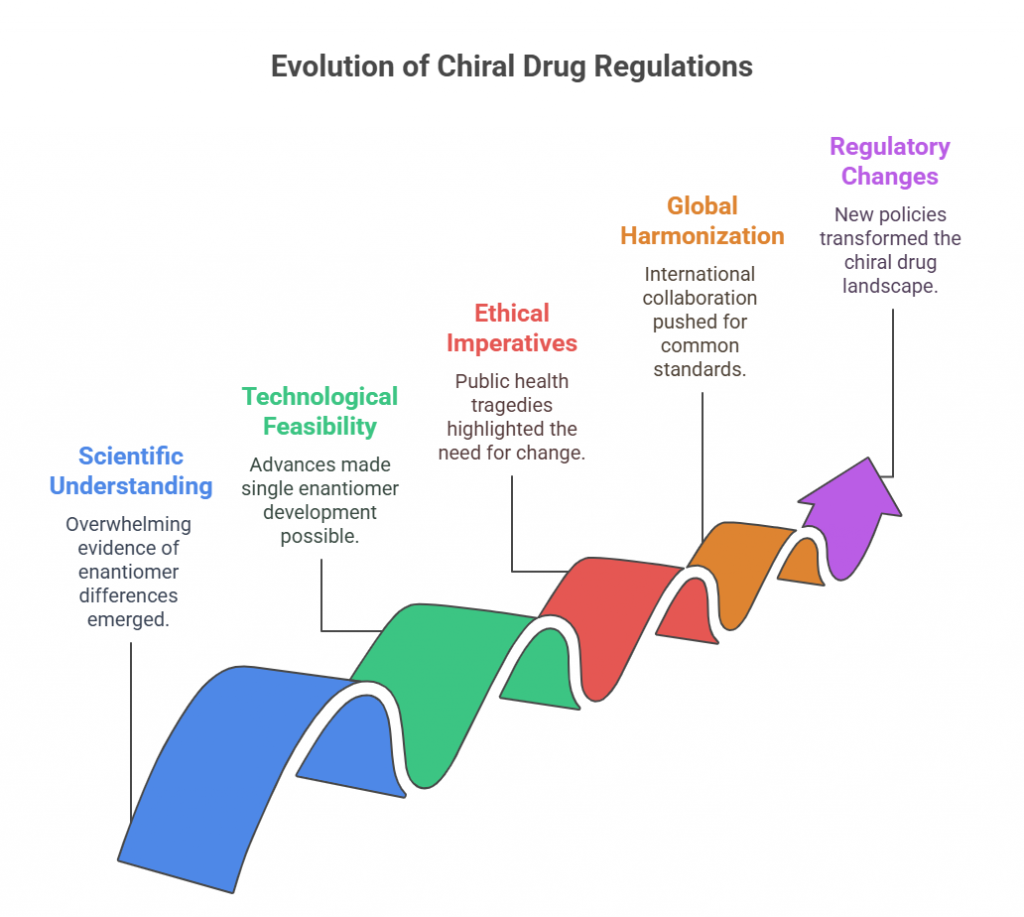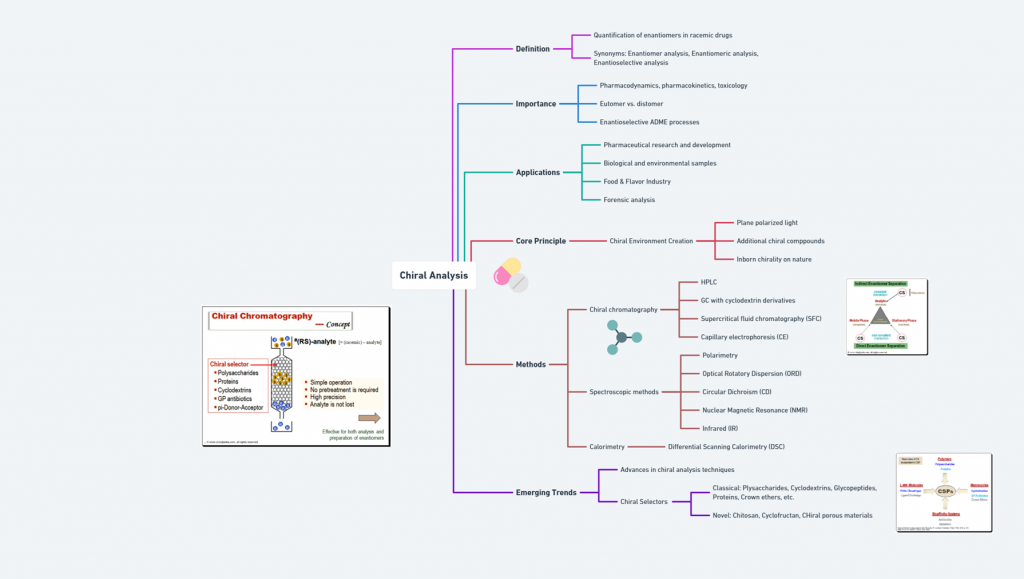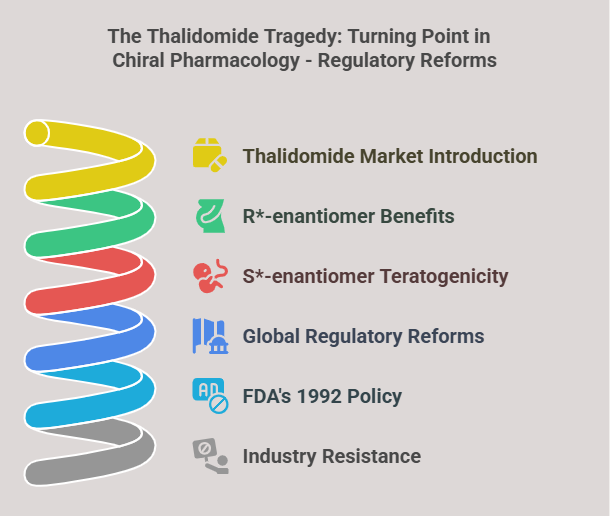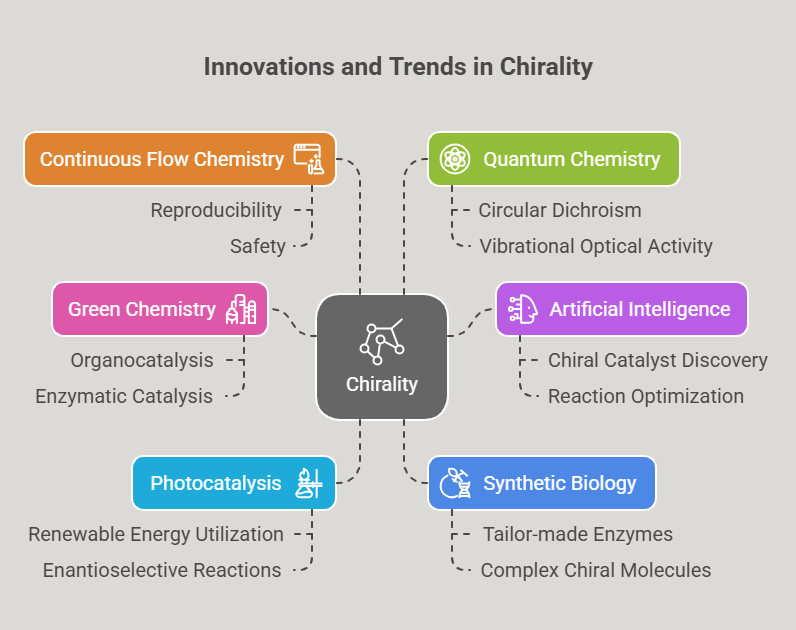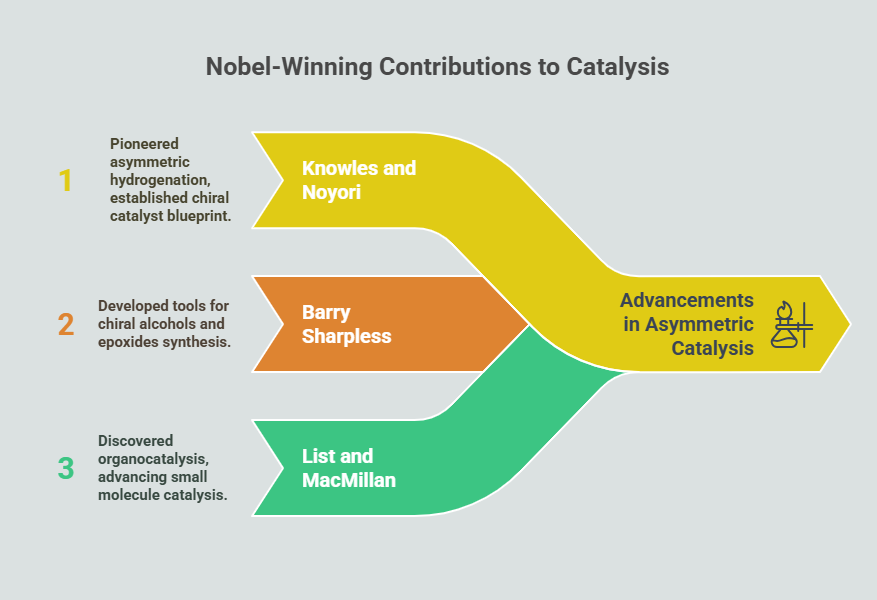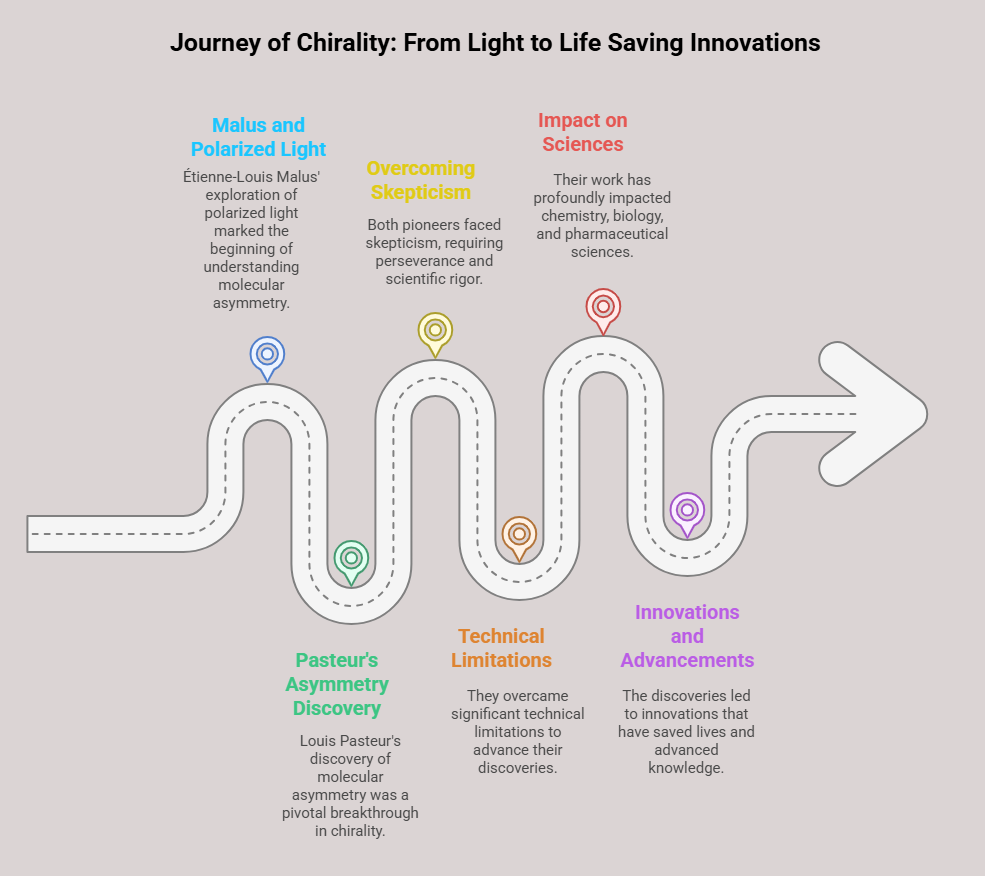Episode 2: The Great Shift: How the 1990s Redefined Stereochemical Standards
“When regulators caught up with science, a quiet molecular revolution began – changing the future of drug development forever.” Introduction The 1990s represent a pivotal decade in pharmaceutical regulation, where long-overlooked nuances of molecular chirality finally received the attention they deserved. Before this era, enantiomers in drug substances were treated as interchangeable entities, with few regulatory frameworks requiring detailed evaluation of each stereoisomer. However, accumulating scientific evidence, technological advances, and a few high-profile pharmaceutical tragedies …
Episode 2: The Great Shift: How the 1990s Redefined Stereochemical Standards Read More »
